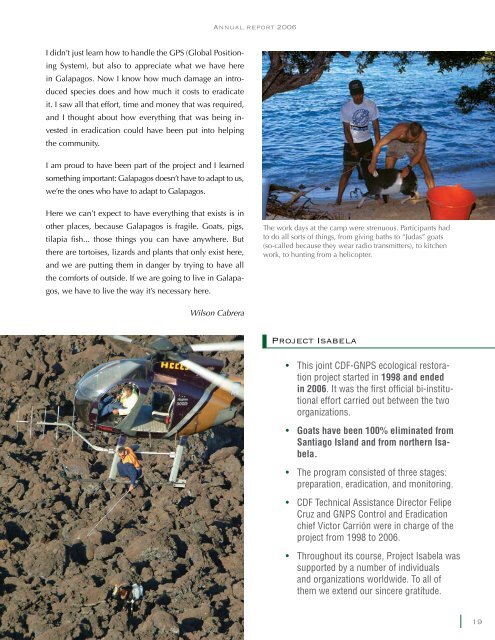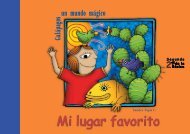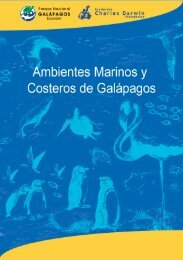Table of Contents - Fundación Charles Darwin
Table of Contents - Fundación Charles Darwin
Table of Contents - Fundación Charles Darwin
You also want an ePaper? Increase the reach of your titles
YUMPU automatically turns print PDFs into web optimized ePapers that Google loves.
I didn’t just learn how to handle the GPS (Global Positioning<br />
System), but also to appreciate what we have here<br />
in Galapagos. Now I know how much damage an introduced<br />
species does and how much it costs to eradicate<br />
it. I saw all that effort, time and money that was required,<br />
and I thought about how everything that was being invested<br />
in eradication could have been put into helping<br />
the community.<br />
I am proud to have been part <strong>of</strong> the project and I learned<br />
something important: Galapagos doesn’t have to adapt to us,<br />
we’re the ones who have to adapt to Galapagos.<br />
Here we can’t expect to have everything that exists is in<br />
other places, because Galapagos is fragile. Goats, pigs,<br />
tilapia fish... those things you can have anywhere. But<br />
there are tortoises, lizards and plants that only exist here,<br />
and we are putting them in danger by trying to have all<br />
the comforts <strong>of</strong> outside. If we are going to live in Galapagos,<br />
we have to live the way it’s necessary here.<br />
Annual report 2006<br />
Wilson Cabrera<br />
The work days at the camp were strenuous. Participants had<br />
to do all sorts <strong>of</strong> things, from giving baths to “Judas” goats<br />
(so-called because they wear radio transmitters), to kitchen<br />
work, to hunting from a helicopter.<br />
Project Isabela<br />
• This joint CDF-GNPS ecological restoration<br />
project started in 1998 and ended<br />
in 2006. It was the first <strong>of</strong>ficial bi-institutional<br />
effort carried out between the two<br />
organizations.<br />
• Goats have been 100% eliminated from<br />
Santiago Island and from northern Isabela.<br />
• The program consisted <strong>of</strong> three stages:<br />
preparation, eradication, and monitoring.<br />
• CDF Technical Assistance Director Felipe<br />
Cruz and GNPS Control and Eradication<br />
chief Victor Carrión were in charge <strong>of</strong> the<br />
project from 1998 to 2006.<br />
• Throughout its course, Project Isabela was<br />
supported by a number <strong>of</strong> individuals<br />
and organizations worldwide. To all <strong>of</strong><br />
them we extend our sincere gratitude.<br />
1





